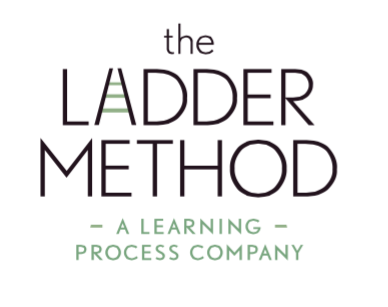Why Writing by Hand Is Still the Brain’s Best Study Tool
Here’s a question we hear all the time from students:
“Can’t I just take notes on my laptop? It’s faster.”
It’s a fair point. In an age where devices can record, calculate, and organize for us, writing by hand can feel unnecessary—almost quaint. But study after study continues to confirm what many parents and teachers already sense: handwriting isn’t just nostalgic. It’s neurological.
The physical act of writing—forming letters, spacing words, sketching diagrams—does more than record information. It strengthens the brain itself, building deeper pathways for memory, comprehension, and focus.
What the Science Shows
A 2024 study from the Norwegian University of Science and Technology, published in Frontiers in Psychology, tracked students’ brain activity as they took notes either by hand or on a keyboard. The results were striking:
Students writing by hand showed high levels of electrical activity across interconnected regions of the brain related to movement, vision, sensory processing, and memory.
Students typing showed minimal activity in those same regions.
As the study’s lead researcher, Dr. Audrey van der Meer, explains:
“It’s very tempting to type down everything a lecturer says. It kind of goes in through your ears and comes out through your fingertips—but you don’t process the information.”
Typing is efficient—but it’s also passive. Each keystroke feels identical. Writing, on the other hand, demands choice. You can’t capture everything, so your brain has to decide what matters, summarize it, and connect it to what you already know. That process—prioritizing, rephrasing, and consolidating—is what deep learning requires.
Why Handwriting Builds Memory
When a student writes by hand, they activate a loop between the motor, sensory, and visual systems. As they form each letter, they see and feel it in real time, feeding information back into the brain’s memory network. This is what researchers call a motor-sensory integration loop—a feedback system that strengthens long-term retention.
Sophia Vinci-Booher, a neuroscientist at Vanderbilt University, puts it simply:
“As you’re drawing a letter or writing a word, you’re taking this perceptual understanding and using your motor system to create it. That creation strengthens the connection between the action and the concept.”
This is especially important for children. Kids who primarily tap or type letters often struggle with letter recognition and mirror reversals—confusing b and d, p and q. Without the fine motor engagement of handwriting, their brains miss the chance to build those crucial distinctions.
From Fine Motor Skills to Executive Functioning
Handwriting doesn’t just help with memory—it’s directly linked to attention, sequencing, and organization.
When children write, they must:
Hold a series of steps in their working memory (how to form a letter, spell a word, structure a sentence).
Coordinate timing and rhythm between thought and movement.
Self-monitor for spacing, alignment, and accuracy.
Those are executive functioning skills—the same abilities that help students plan, manage time, and perform well under pressure. By skipping handwriting, we risk skipping essential developmental practice for these mental muscles.
Technology and “Cognitive Offloading”
None of this means laptops or tablets have no place in learning. Digital tools are powerful for essays, research, and accessibility. But researchers warn against cognitive offloading—the habit of letting devices think, organize, and remember for us.
When we outsource every mental task to technology—whether it’s remembering directions, saving notes, or auto-filling reminders—we weaken the very circuits that make memory and focus strong. As cognitive scientist Yadurshana Sivashankar notes:
“It’s helpful, but if we’re not actively using these brain areas, they deteriorate—whether it’s memory or motor skills.”
That’s not anti-technology—it’s about balance. The key is to ensure that our tools support thinking, not replace it.
What This Means for Your Child
If your student’s learning feels scattered or their retention is slipping, the solution might be as simple as giving them a pen.
Here’s how you can reinforce the science at home:
Encourage handwritten review notes. After class or tutoring, have your child rewrite main ideas in their own words—by hand.
Use drawing as study. Encourage sketches, charts, or handwritten diagrams instead of copy-pasted digital notes.
Minimize multitasking. Turn off music and devices during handwritten study to strengthen concentration.
Revisit early motor skills. Coloring, puzzles, and journaling aren’t just creative—they build the fine motor foundation for cognitive growth.
Even a few minutes of deliberate handwriting each day can improve how students encode and recall information.
In a world racing toward automation, handwriting is a rare kind of slowness that serves us. It makes the brain work. It demands attention, choice, and connection—the very elements that make learning meaningful.
So the next time your child insists that typing is faster, remind them:
Fast doesn’t always mean smart.
Sometimes, slowing down is what helps us move forward—one handwritten line at a time.
Sources:
Hu, Charlotte. “Why Writing by Hand Is Better for Memory and Learning.” Scientific American, May 2024.
https://www.scientificamerican.com/article/why-writing-by-hand-is-better-for-memory-and-learning/
van der Meer, A. L. H., & van der Weel, F. R. (2024). Distinct widespread brain activation patterns during handwriting and typewriting in 12-year-old children: An EEG study. Frontiers in Psychology, 15, 1337736.
https://doi.org/10.3389/fpsyg.2024.1337736Vinci-Booher, S., James, K. H., & Hayes, M. (2016). Handwriting experience predicts visual–motor functional connectivity in the developing brain. Frontiers in Human Neuroscience, 10, 77.
https://doi.org/10.3389/fnhum.2016.00077Sivashankar, Y., & Fernandes, M. A. (2021). Action, enactment, and memory: How producing information shapes recall. Memory & Cognition, 49(5), 918–930.
https://doi.org/10.3758/s13421-021-01162-9Mueller, P. A., & Oppenheimer, D. M. (2014). The pen is mightier than the keyboard: Advantages of longhand over laptop note taking. Psychological Science, 25(6), 1159–1168.
https://doi.org/10.1177/0956797614524581

